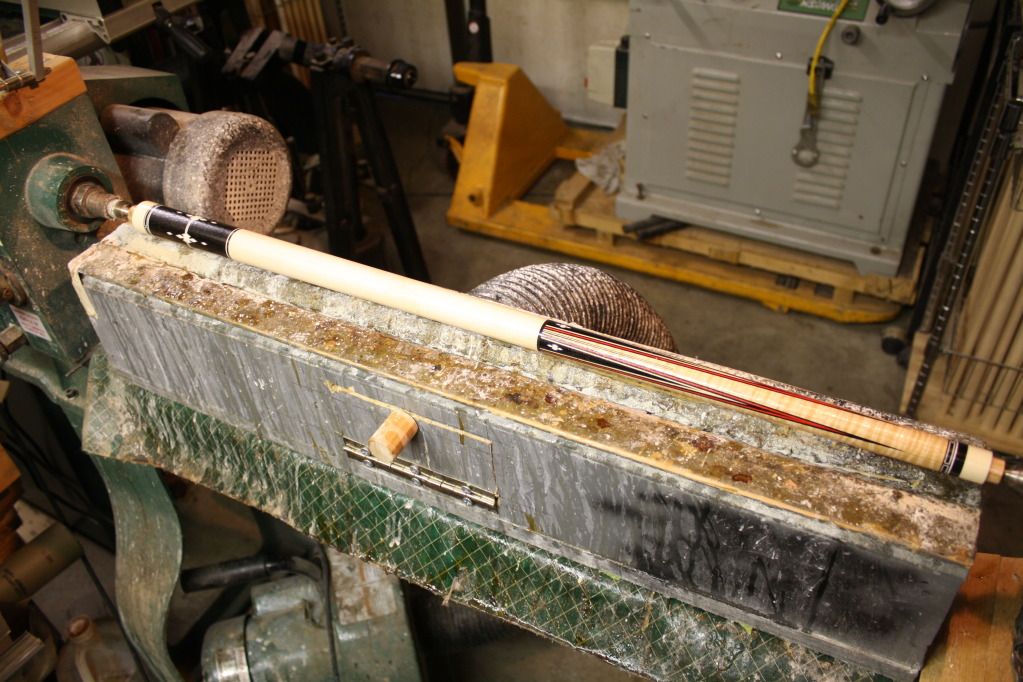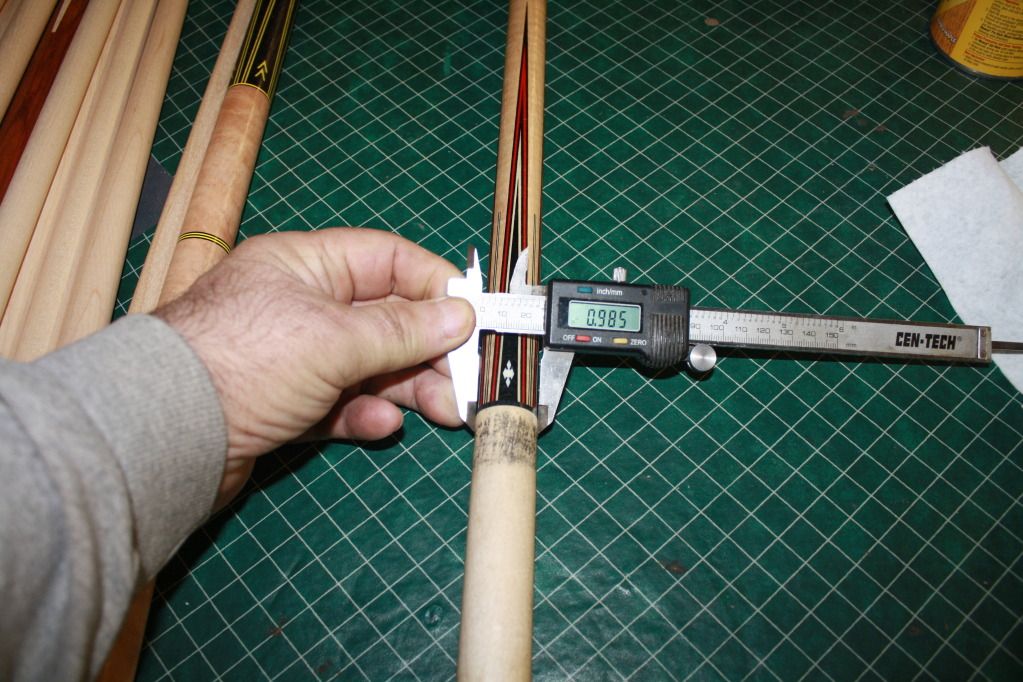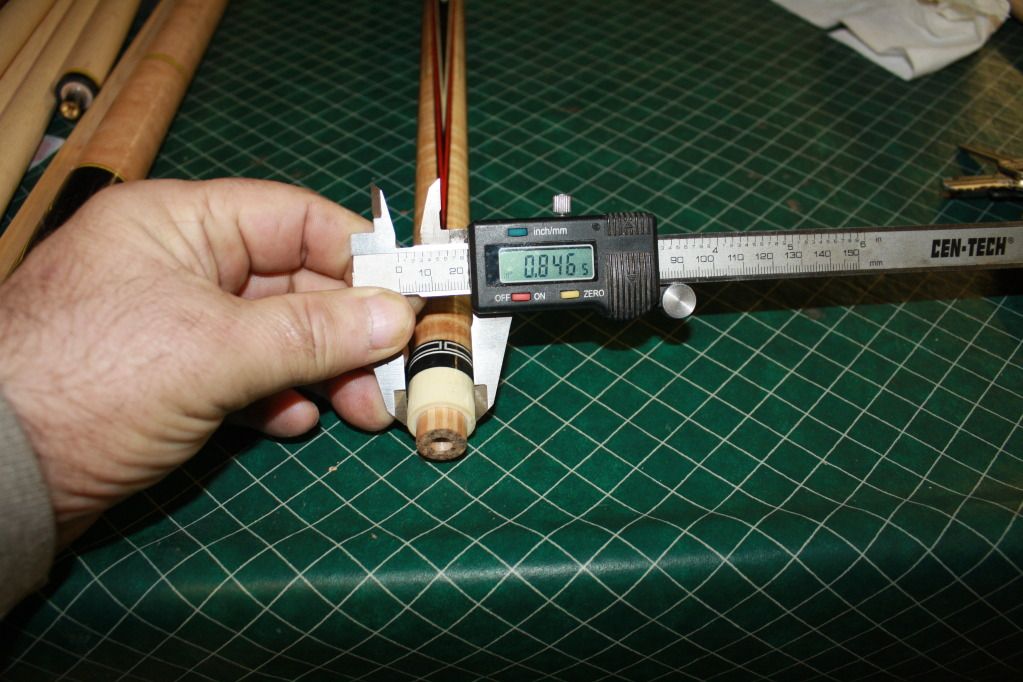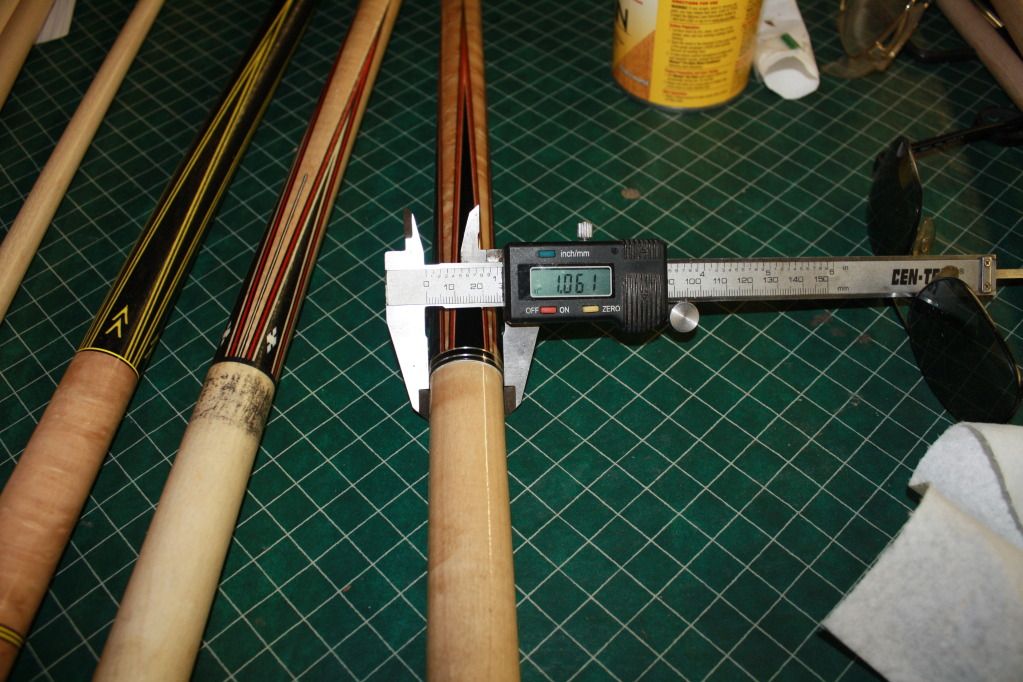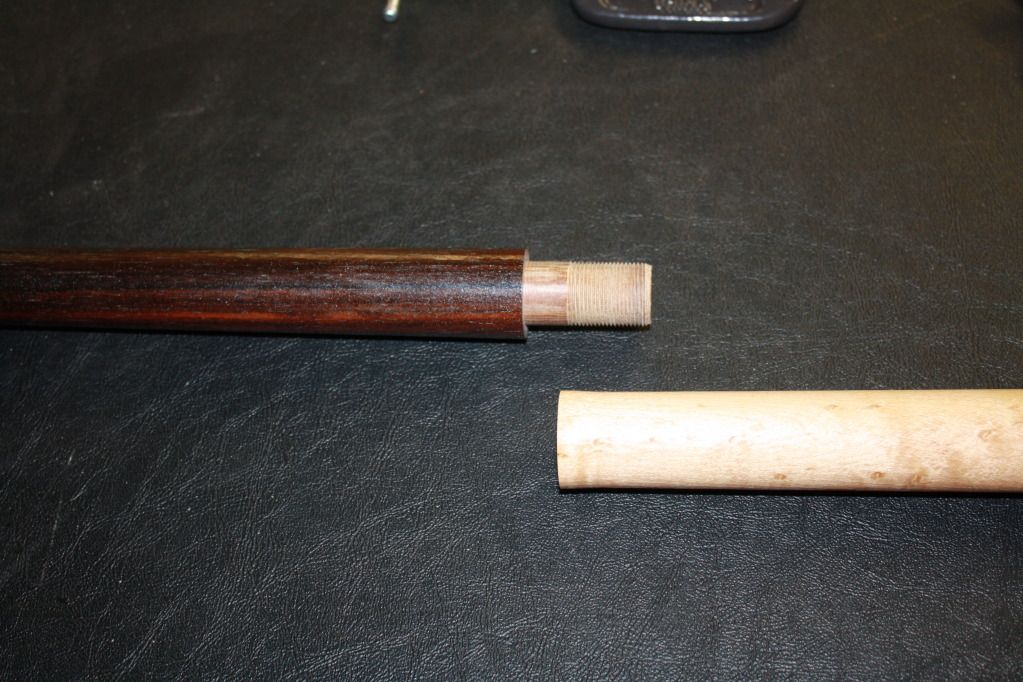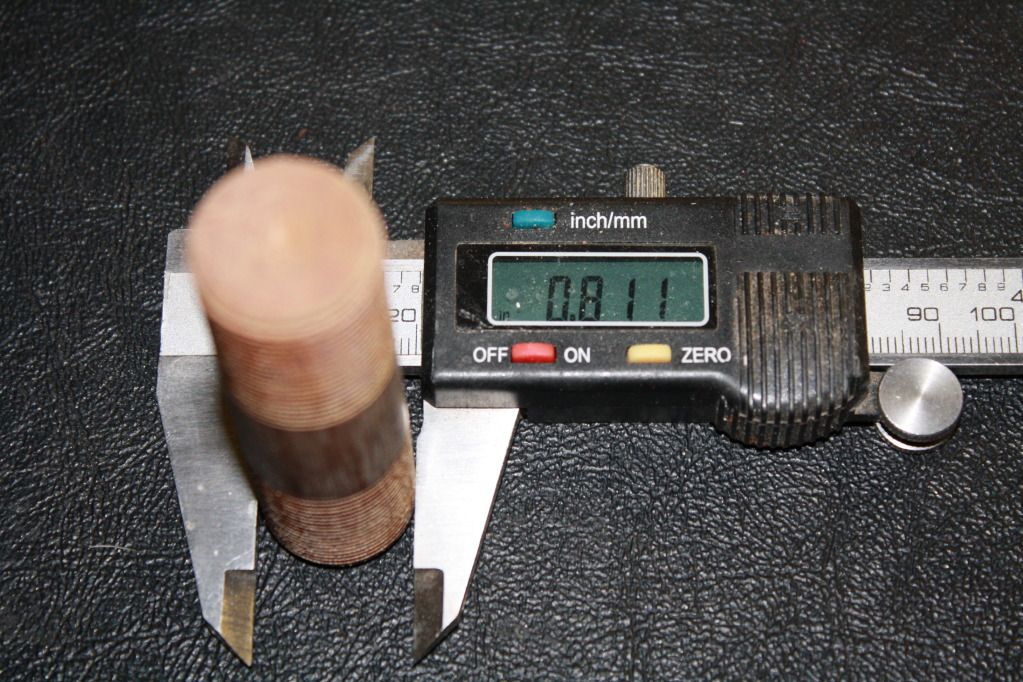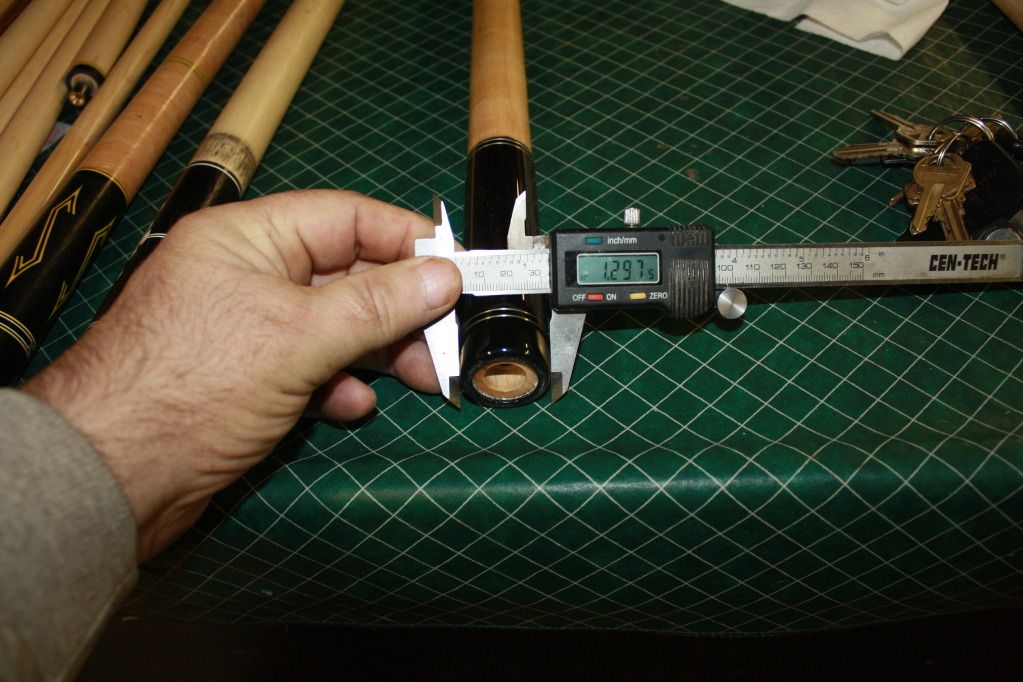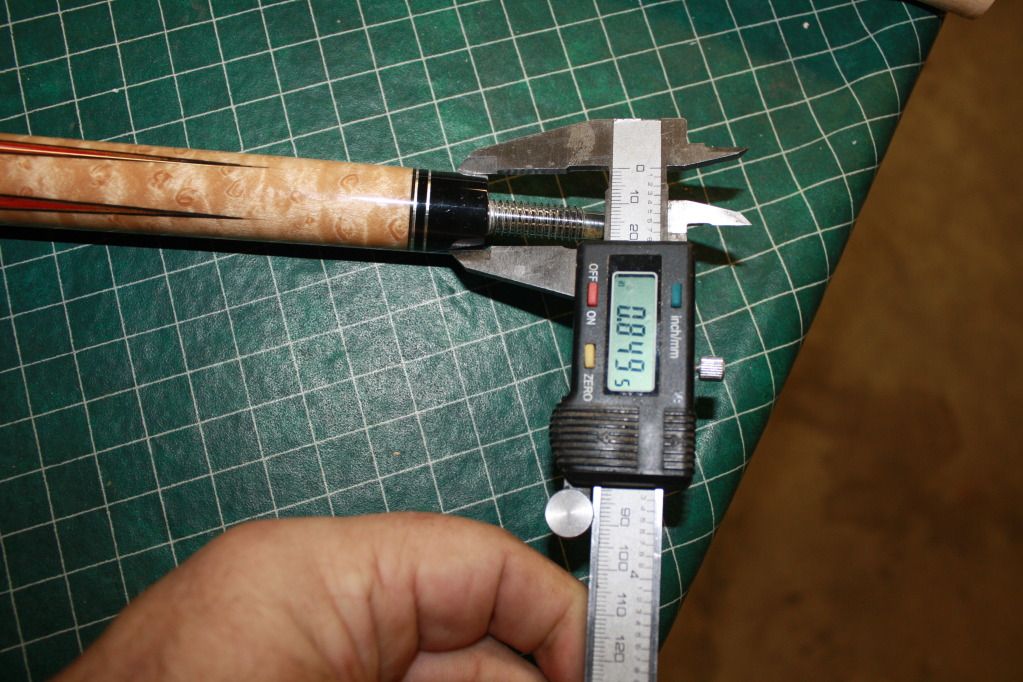i know its the end mass of the shaft and taper that play major roles in squirt/deflectiom but in a thread in the main forum there was reference to meuccis studies and videos
apparently usinf a robotic arm and sophisticated measuring system
he found differring amounts of deflection using a black dot shaft on several manufacturers butts (all results had less deflection with the black dot vs the cuemakers shaft)
so
if the shaft was a constatnt
how does the butt come into play????
i am not a cuemaker so pardon my ignorance.....:embarrassed2:
Hi,
I truly believe that the geometry of the butt has a causation effect on the deflection of the cue. JMO however.
My friend Darrin Hill makes a very fine full splice cue and he was at my shop and we did a little test.
Darrin's A-Joint is about 1.020 on the FS and has a straight taper about .400 in 29 inches. Joint .850 and butt 1.250. Of coarse Darrin has no A-Joint as it is spliced joinery.
My cue has the same .850 joint and the butt is 1.254 but A-Joint is only .984 as I have a Parabolic butt taper that starts at the butt and ends at the A-Joint and then is a straight taper to the nose. I do not have an A-Joint bolt as my cue is fully cored on a .738 dia. laminate maple dowel. I like the thinner handle of some Phillipino cue I have seen hence my design of my butt geometry is a hybrid so to speak.
Back to our little test:
We took 6 cues, Darrin's FS, My Full Cored, a Mcdermott, a Players, a Schon and a Omega DPK with the 3/4" phenolic A-Joint const. We then put them all between centers and put hand pressure on the A-Joint area and pressed down to observe deflection in the butt with this lateral pressure.
Here are the results of our observations but the were not done using a device that would measure the downward force only out mussle memory as best we could judge. Not too scientific but a very close comparison just the same.
Hills Full Splice was the stiffest with just a slight deflection of the butt.
Esoteric FC was stiff but deflected a little more than the Hill.
Omega DPK with the 3/4" A-Joint was about the same as my cue.
The other three cue with A-Joint bolts all deflected about the same and in was a dramatic difference and those cues were able to bow significantly in the middle.
So there we are, all we proved was that cues with A-Joint bolts had more deflection in the butt which does not mean they play any better or worse than the other stiffer cue construction. Just different. As it was pointed out here, eack player has a differnt kind of stroke and each cue gives a different action.
The resilience of the cue when joined can be seen by holding the joined cue upright and bumping the side with your palm, then watch the tip and see ho long it take for the vibration to stop. The Omega, Hill and my cue stopped vibration very quickly after the shock load of the palm while the the other cue with a conventional A-Jpint pin continued to vibrate about twice as long.
All of the shafts were 13 mm except the Hill was as 12.75. We did interchange Darrin's shaft and the Mcdermott which were both 3/8 10 pin and even though his shaft was slightly smaller we did not see any noticeable difference in the tip vibration durations.
So from this little test we observed that the butt has a huge effect on the resilience factor of the cues which I believe has an effect of the inertia and transfer of the force to the cue call. I believe that the stiff cue gets through the ball in a few milliseconds faster than the cue with more resilience. Because there is a ever so slightest degree of an elastic collision or cushioning during impact this may have an effect on the deflection of the tip and the deflection of the entire cue's straightness behind the bridge hand while doing the deed.
As a room owner I have noticed that most 9 ball and 10 ball higher skilled players who use a lot of spin tend to also like thinner shafts when they load the juice. The one pocket, straight pool and banks guys seem to like a stiffer hit.
Nothing I have said here is a collection of data numbers and was done just for our curiosity.
Like Mike Webb said,
"It would be impossible for me to say which style is actually better, when there are so many great cues across the board and of course the final deciding factor of better would be, What is better for yourself". Great player will adjust and can play with any cue given enough time at the table but over time they learn what thats really like though trial and error.
Efren his a tip under 12mm with an Elk master tip and spins everything with that skinny shaft. I am sure if you gave him a 13 mm FS with a Kamui Med he would not be a happy camper. You still would not want to bet against him though.
Just like golf clubs today, the pool player has so many different choices because all CMs have their own standards and all cues are different.
To the OP, I do believe that the butt makes a big difference.
JMO,
Rick
